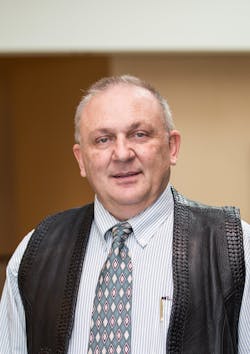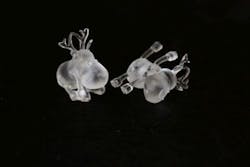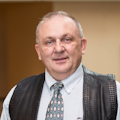AKL'16 Laser Congress draws record crowd

For over 20 years, laser manufacturers and laser users from around the world have been meeting in Aachen, Germany, for the biannual International Laser Technology Congress (AKL). Last week, nearly 700 participants—a record—attended the event. There were also over 50 vendors, which was a limited number because of space. This success gives cause for a new venue for future events to allow for more vendors.
Because of a scheduling conflict with the Laser Institute of America's LME conference, ILS editor-in-chief David Belforte could not attend, so I had the honor of giving the invited talk on "Laser Markets in the Americas" (which is summarized in the April 2016 issue of Laser Technik Journal) at the business session on Wednesday, along with my esteemed colleagues Klaus Loffler (Europe), Dr. Bo Gu (China), and Dr. Kunihiko Washio (Japan). I could not resist the temptation and therefore did the introduction in German, which somehow I actually pulled off—evident when one of the German attendees remarked after the talk that my German was very good!
I had the pleasure of interviewing the three finalists for the European Laser Innovation Award that was presented at a Grand Reception on Wednesday evening. The third-place winner was the Coherent team, led by Dr. Ralph Delmdahl, who developed a new excimer laser lift-off tool that is similar to the currently-in-production laser annealing tools, but at a much lower cost (10X lower). This tool has high yield because of its extreme stability and can process 35,000m2 of product per month. New gas mixtures and Pulse on Demand extend gas lifetime. This is expected to be the next killer excimer application, and was presented last August.
The second-place winner was the Audi team, led by Dr. Jan-Philipp Weberpals, who developed a new method for laser welding of aluminum. Traditional laser welding methods input too much heat, causing cracking of the seams. This method uses temporal and spatial control of the laser beam, with the laser beam trailing by 5mm of laser triangulation, which only requires 5ms to adjust the mirrors. More about these two winners may be forthcoming in future issues of ILS.
The winner was the Philips team, led by Dr. Armand Pruijmboom, who developed a novel high-power laser technology using VCSEL arrays for thermal processing. This method is useful for melting, drying, curing, annealing, or alloying applications and uses far less power than conventional heating methods—plus, it allows precise control. Using this method, heat is applied only when and where needed. This technique has been reported presciently in the March/April 2015 issue of ILS.
During this year's conference, the live demos at ILT were held on Thursday afternoon instead of Friday afternoon to allow more people to visit the lab. There were many live demos at over 90 stations on a host of laser-related topics, such as welding, marking, cutting, additive manufacturing, optics, and control. I mentioned a company called Laser Light Fab in a previous blog—they gave me a cool little reindeer at SPIE Photonics West that was made using selective laser etching (SLE), but it "disappeared" while showing it around. I managed to get another sample (see photo)—the whole thing was hogged out of a solid piece of material, and the size is such that it would fit within a 5mm cube. Note the extreme detail and also that the legs and head are fully articulated—they move! The tiny ball joints have a close-enough fit to allow movement, but without allowing the legs to fall out. Amazing!
I am always interested in hearing your thoughts concerning laser micromachining, comments on entrepreneurial endeavors, etc. AND … we are always looking for fresh, publishable material. Please feel free to contact me at [email protected].
About the Author
Ron Schaeffer
Ron Schaeffer, Ph.D., is a blogger and contributing editor, and a member of the Laser Focus World Editorial Advisory Board. He is an industry expert in the field of laser micromachining and was formerly Chief Executive Officer of PhotoMachining, Inc. He has been involved in laser manufacturing and materials processing for over 25 years, working in and starting small companies. He is an advisor and past member of the Board of Directors of the Laser Institute of America. He has a Ph.D. in Physical Chemistry from Lehigh University and did graduate work at the University of Paris. His book, Fundamentals of Laser Micromachining, is available from CRC Press.

